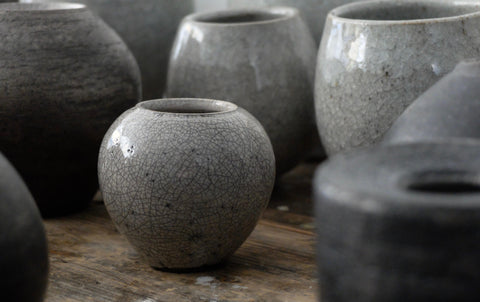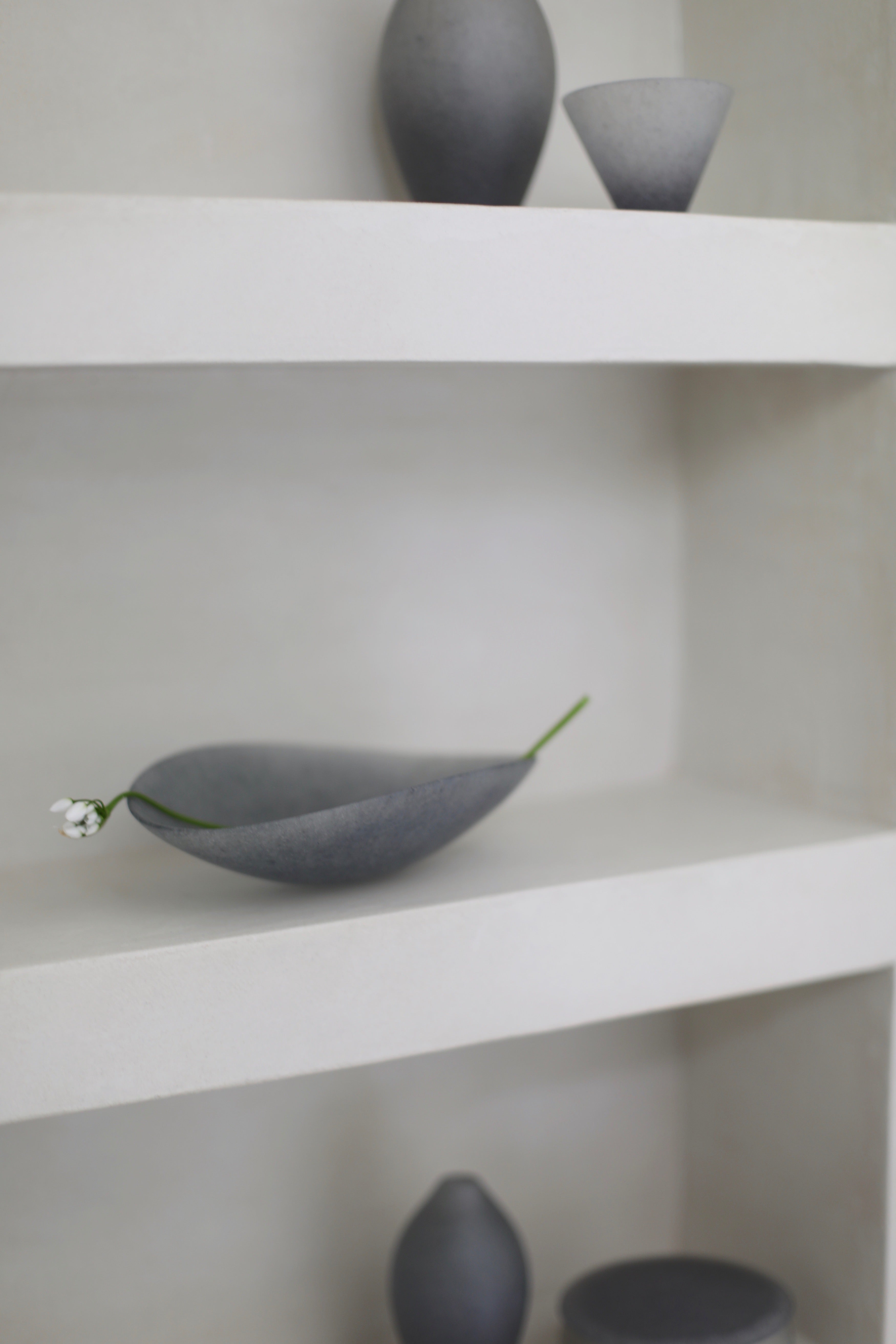Many of the artists featured in Maud and Mabel’s ceramic collection are drawn to practices and techniques with an uncontrollable element to them. This provides surprise and chance that can result in the most exquisite textures and patterning, made all the more special in the knowledge that they are ‘accidental.’
What is Raku Pottery?
Raku pottery is a low-firing process that originated in Japan in the sixteenth century, traditionally used for the tea ceremony. Tanaka Chōjirō, believed to be the first person to ever create raku ware, made tea-bowls for the tea-master Sen no Rikyu. Tanaka Chōjirō’s descendants, known as the Raku family, continue to produce raku pieces today, many years and generations later.
The nature of the technique is wonderfully described in the meaning of the word raku, which is, 'happiness in the accident.' The traditional Japanese method of Raku is a natural firing process that relies on each of the elements: fire, air, earth and water. Vessels are fired at a low temperature for a brief amount of time, removed from the kiln when it has reached its highest temperature, and then left to cool.
Western ceramic artists have adopted and modified their own versions of Raku pottery. In the West, raku pottery firing also sees the removal of pieces from the kiln when the temperature is at its peak, but rather than being left to cool in the open, work is placed in combustible materials (such as paper or sawdust) to cool. Raku firing is a fast process, and the sudden change of temperature means the pottery is more at risk of breaking.
Kate Schuricht specialises in raku and stoneware firing. Her vessels, taking the forms of boxes, pots, vases and jugs, are often shown as collections or groupings. They are unified in their crackled patterning, but are all individually completely unique, as each piece reacts differently to the firing.
London ceramicist Jennifer Morris favours using the raku firing process for her functional and decorative raku ceramics because she likes the uncertainty of the finished piece. She says of raku, ‘You can never make the same exact piece twice and therein lies the magic!’ Jennifer’s understated and limited colour palette and simple silhouettes are perfectly complemented by the crackling effects of their surfaces.
The development and spread of the dramatic raku firing technique has engendered a type of ceramics with the most beautiful surface decoration: a celebration of form rather than pure function.
What is Wood-Firing in Ceramics?
Similarly, wood-firing in ceramics is a process brimming with the potential for surprises, not to be used for the production of identical wares. But unlike fast raku firing, the duration of wood-firing can last weeks or months, throughout which a large amount of wood is used and burned, and a considerable quantity of ash is produced. As the ash melts it creates unplanned and unforeseen markings and effects.
Although wood-firing was constantly celebrated by Japanese ceramicists, this was not the case all over the world and the technique was replaced by gas and electric kilns for many potters and many years. However, contemporary ceramicists with an interest in natural processes and materials have chosen to use wood kilns, embracing the unique characteristics that result from the combination of fly ash and salts with clay. Nancy Fuller’s pieces are wood fired in her anagama kiln for four days. The palette and patterning of her wood-fired ceramic vessels depends on the proximity of the work to the fire.

Smoke-firing is another technique with wonderful and unexpected outcomes. Pieces are smoke-fired after an initial kiln firing. Hannah Blackall-Smith uses this process to create vessels that resemble ancient pottery. Hannah’s work is smoke-fired for 48 hours in a pit firing, along with organic materials like seagrass and seaweed, to create clouds of colour and striking surface patterns.
At Maud and Mabel we are fascinated and inspired by the use of these traditional, raw and organic techniques and processes, and the extraordinary beauty and honesty of the ceramics that they produce.



